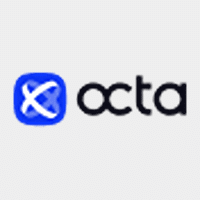
Arguably, a more crucial question than our headline is, once you’ve entered one of these options (such as a free forex demo account), do you know more about whether you have the appropriate skills to enter this volatile arena? After all, isn’t that the only reason why anyone would try it? It’s a stepping stone, but to where? To discover the insightful answers that count, read on.
There’s a saying, ‘Fools rush in where angels fear to tread.’ We like to believe that interfacing situations where one’s savings or capital are at stake require the utmost caution. It’s like approaching a swimming pool where you’re not sure how cold the water is. So, most people put a toe in before bracing themselves for a full-body dive. It’s an analogy, but an apt one. Instead of plunging into trading forex, securities (bonds and equities), REITs or cryptos, demo accounts offer you a toe-first, test-the-temperature opportunity.
Background and Context
From a broker’s viewpoint, demo accounts are promotional vehicles – a primary attraction designed for you to get into active trading. Advertised everywhere, especially on the internet, they represent a modern form of paper trading. The latter boils down to simulating trades in real time with no money on the table and, therefore, zero risk. The difference between old-fashioned paper trades and demo trading (DT) is that DT is computer-centric on a dedicated simulator platform to assess one’s trading acumen.
So, many novices ask, ‘How different will I fare with my money down on a real-time trading (RTT) platform once I exit my free demo account?’ Indeed, it’s a vital question, because trying it for free may relay a message and build an experience vastly that’s different from the rough and tumble of fast-moving RTT markets. Consider the following:
A. Trade Execution
- On RTT platforms:
- Market orders frequently suffer significant slippage because of poor security liquidity, queuing, partial fills and erratic bidding, especially in thin markets.
- Stop-loss precautions often fail to fill in transactions that trade with little velocity.
- Conversely, in simulated demo accounts:
- Market orders execute instantly, oblivious to the slippage factors described above.
- DT stop losses likewise work every time, ignoring that weak trading patterns, in reality, would have rendered them wholly or partially impotent.
Granted, DT customers derive an insightful feel of navigating the broker’s platform, thus preventing stupid errors when moving to RTT. However, the bottom line is that demo account activities are RTT feelers at best, moderately inaccurate if we view the vertical optimistically, and substantially off the mark if we want to be realistic.
Related Articles
- A Few General Principles on Technical Analysis
- Interest Rates and Volatility
- Automating Your Forex Trading
For example, assume that Trader A on a free forex demo account and RTT Trader B simultaneously place the same forex swap (say, USD/ZAR in a thin market). We predict the following:
- It’s doubtful that they would be close on the transaction entry or exit.
- Trader A would be positioned significantly better.
- Therefore, Trader A would be removed from reality and have a false sense of security.
In short, demo account traders transacting minor or exotic currency pairs, small or micro-cap equities, or non-investment grade bonds with massive success are in for a tremendous execution shock on the RTT transition. The change is tantamount to walking into an alien world.
So, what’s the remedy? The answer is, first, do precisely the opposite to the above. Therefore, trade one or all of the following three asset categories during the DT process by favouring:
1. Low volatility major currency pairs in the forex markets – pairing the US dollar (USD) with any one of the following:
a. Euro (EUR)
b. Australian dollar (AUD)
c. Swiss franc (CHF)
d. Japanese yen (JPY)
e. Canadian dollar (CAD)
2. Big-cap stocks such as Apple (APPL), Microsoft (MSFT), Alphabet Inc (GOOGL) and Netflix (NFLX) on the NASDAQ. Similar securities on international exchanges located in recognised trading cities such as Toronto, London, Frankfurt and Hong Kong.
3. Mainstream-rated bonds (using the US as an example):
a. S&P rated no lower than AA-
b. Moody’s rated no lower than Grade Aa3+
Why? Because they have one common denominator: High liquidity. And this means limited slippage. So, if you want a more realistic execution experience on a demo account platform, stay close to assets that trade with high velocity. The latter transact fast both in and out (almost instantly). Also, stop losses under and above highly liquid suggested trades rarely falter. While this isn’t a perfect solution to closing the DT/RTT execution gap, it goes a long way.
B. The Capital Demo Traders Play With
Traders in options and forex markets routinely deploy leverage facilities that brokers offer under financial regulator rules. Indeed, broker leveraging can greatly help experienced traders by substantially expanding the capital for trading. It means that for every monetary unit of your personal input (i.e., US dollar, pound, Australian dollar, euro, etc.), the platform facilitator will lend you a multiple. For example:
- In the forex markets, leverage can go as high as 100:1.
- So, using USD as our focus, for every $1,000 you decide to stake in your RTT initiative, you can add $100,000 in leverage value (for a total capital base of $101,000).
- However, most free forex demo account platforms have leverage ratios defaulted into the system that you generally can’t change. It can range from 1/1 up to 1000/1. Whatever it is, it’s unlikely to align with the RTT leverage you secure after moving into that arena. That’s the problem because it’s another layer of unrealistic trading conditions.
- In other words, trading with, say, five times what one will eventually rely on in RTT creates an impractical safety net.
- Think of it this way: more capital forgives more losses, whereas zero/low leverage funding balances on a knife edge. In the ‘low leverage’ case, your stake can disappear minutes after initiating money-down trades with scant recoupment possibilities.
- In addition, even lots (100 shares) in high-denomination securities – easy to trade in a demo account – become inaccessible on entering RTT with a severely curtailed budget.
So, the primary remedy for funding imbalances between RRT and DT is to enter the latter with precisely the capital (equity + loan) that one intends to deploy when going live. How do you do that? We advise structuring your fake money input x the demo account leverage default to equal the RTT funding level you visualize. For example:
- Suppose that you intend to invest $5,000 on entering RTT with a 20x broker leverage = $100,000 additional funding for a total of $105,000.
- However, the default leverage factor on the demo account is 100x. So, unfortunately, if you enter $5,000 as your contribution, the DT playing field will escalate to $505,000 total – nearly five times higher than your predicted RTT vision.
- So, the solution is to enter your make-believe stake as $1,000 x 100 = $101,000 total base. It’s as simple as that.
C. A Demo Account Is Emotionless
Probably the widest gulf between simulation and RTT is testing one’s resilience in adverse trades. Having your own money on the line is a different kettle of fish from playing with monopoly cash. Why? Because fear, even panic, never stops hanging around. And that’s only a fraction of the ‘emotions story’. There are also hope, greed and despair – feelings that can impact decisions when real capital is in the mix.
Moreover, playing with leveraged money is extremely dangerous. It has a frightening dark side that can implode an RTT portfolio in a heartbeat if abused or volatility throws it out of control. For example:
- Chasing a trade by pushing out stop losses instead of tightening them is a traditional crack in traders’ logic driven by emotional lapses. In our view, never compromise your stop-loss precautions under any circumstances. They’re the best weapons against emotional reactions that traders have in their resource pool.
- Another thing – when leveraging a portfolio on RTT, it’s easy to forget that it’s borrowed funds. Thus, as bad trades pile up and margin calls roll in, the most irrational emotions ignite, tilting the balance in the wrong direction.
What’s a margin call? First, the broker demands that you add cash to your account within 24 hours to bring it into regulation alignment. Second, failure to do so can result in the platform freezing your RTT account and possibly liquidating it with significant losses. There are no margin calls in a free demo account, but sure as little green apples, it’s in play in RTT.
So, how do you get a realistic feel for emotions in the DT phase? The answer to this will probably surprise you.
We advise you to enter RTT cautiously with tiny investments and conservative leveraging in the beginning. Yes, trade smaller than your demo account, even if you followed our advice to the letter – indeed, even if you believe that your DT realistically aligns with your RTT vision. In other words, baby steps versus the inclination to stride into the RTT environment with the comfortable demo account tempo.
As suggested in our introduction, one toe at a time until you feel comfortable with the emotional temperature. Emotional fortitude is the most untested variable in the entire scenario. So, while a free forex demo account conceptually represents ‘baby step thinking’ in totality, recycle it by going even lower before fully opening yourself to the emotional brunt of an RTT platform. Genuine emotions only emerge in real time with risk as a driver. Therefore, testing it is crucial, as described.
The Best Demo Accounts
| Broker | Features | Regulator | Platforms | Next Step | |
|---|---|---|---|---|---|
 Your capital is at risk
Founded: 2014 Your capital is at risk
Founded: 2014 |
|
FSPR | MT4 | ||
 Your capital is at risk
Founded: 2006 Your capital is at risk
Founded: 2006Europe* CFDs ar... |
|
ASIC, FSA, FSB, MiFID | MetaTrader4, Sirix, AvaOptions, AvaTrader, Mirror Trader | ||
 Between 74-89% of CFD traders lose
Founded: 2010 Between 74-89% of CFD traders lose
Founded: 2010Between 74-89 % of retail investor accounts lose money when trading CFDs |
|
ASIC, FCA | MetaTrader 4, MetaTrader 5, cTrader | ||
 Your capital is at risk
Founded: 2011 Your capital is at risk
Founded: 2011 |
|
CySEC, FSC, FSCA, MISA | MT4, MT5, OctaTrader | ||
 Your capital is at risk
Founded: 2009, 2015, 2017 Your capital is at risk
Founded: 2009, 2015, 2017 |
|
ASIC, CySEC, IFSC | MT4 Terminal, MT4 for Mac, Web Trader, iPhone/iPad Trader, Droid Trader, Mobile Trader, MT5 | ||
 Your capital is at risk
Founded: 2006 Your capital is at risk
Founded: 2006 |
|
CySEC, DFSA, FCA, FSB, SIA | MetaTrader4, MetaTrader5, cTrader, FxPro Edge (Beta) | ||
Conclusion
Everything recommended above converges on aligning your DT experience with RTT. That way, there are fewer shocks when your funds are at risk. As tempting as it sounds to open a free demo account and start trading with abandon, it requires forethought and planning. The challenge is to align the trial period as closely as possible with RTT dynamics down the line. We have provided the key insights. Next, we suggest reviewing reputable brokers from the table below to see which one fits your needs and profile best.
Forextraders' Broker of the Month
BlackBull Markets is a reliable and well-respected trading platform that provides its customers with high-quality access to a wide range of asset groups. The broker is headquartered in New Zealand which explains why it has flown under the radar for a few years but it is a great broker that is now building a global following. The BlackBull Markets site is intuitive and easy to use, making it an ideal choice for beginners.

